Feb 1, 2024
Delightfully Japanese retro: Iizaka Onsen and downtown Fukushima
Gallery - Iizaka Onsen and downtown Fukushima
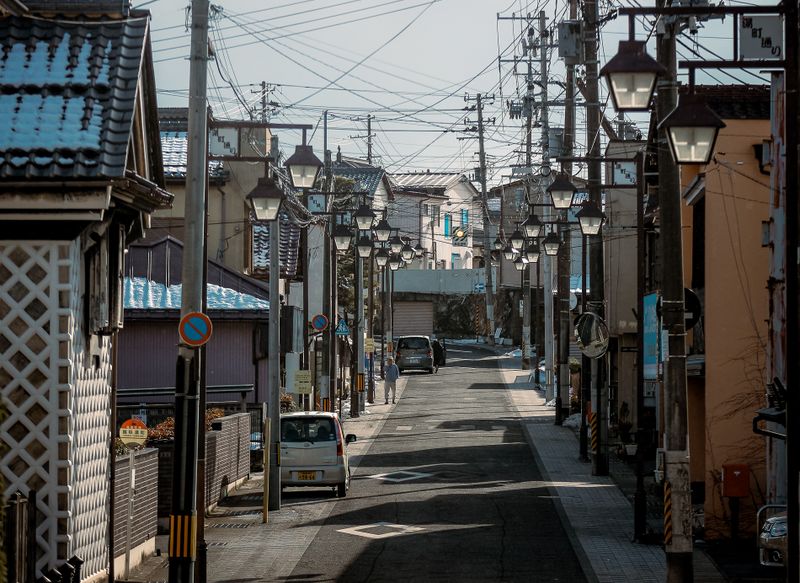
The hot spring town of Iizaka Onsen is a comfortable weekend away from Tokyo. Together with downtown Fukushima City, this is a trip for those who like their style to be retro - Japanese retro.
Trains on the practically named Fukushima Transportation Iizaka Line amble to and fro between Fukushima Station and the hot spring town of Iizaka Onsen. The journey time is a relaxed 20 minutes or so. IC cards from other parts of Japan can’t be accommodated.
Drivers really do seem to take their time on the approach to the platform. Is it a technical consideration, or are they giving plenty of time for the tourists and train enthusiasts to take pictures?
The trains are certainly photogenic. Carriages are done up in spruced-up retro and sport signage that plays tricks with the Iizaka name - “good train.” Iizaka Line trains went into service in 1924. This means they actually pre-date the Showa era - the benchmark time period into which all-things retro in Japan fall - by a year or two. A minor technicality.
Iizaka Onsen is thought to date back some 2,000 years. Like many hot spring towns in Japan though, it throws together elements of the ancient with the gaudy, and increasingly neglected, Showa retro. Add in the more recent efforts to welcome visitors through the manga-inspired Onsen Musume Project - whose local character “Mahiro” can be seen pouting at various locations around town - and Iizaka Onsen presents an eye-catching timeline of styles.
The center of town is easy to navigate. Outside the train station we crossed the steel-arched Totsuna Bridge to the eastern banks of the Surikami River. “Nothing much to see on this side of the river,” said staff at the tourist information center.
Nothing much save for a row of ghostly former hot-spring resorts that occupy what was once presumably considered prime river-front real estate. Now they’re among the many casualties of Japan’s bubble-economy burst. (Two of the former resorts have been converted into care homes for the elderly. Another was under reconstruction-restoration work at the time of visiting.)
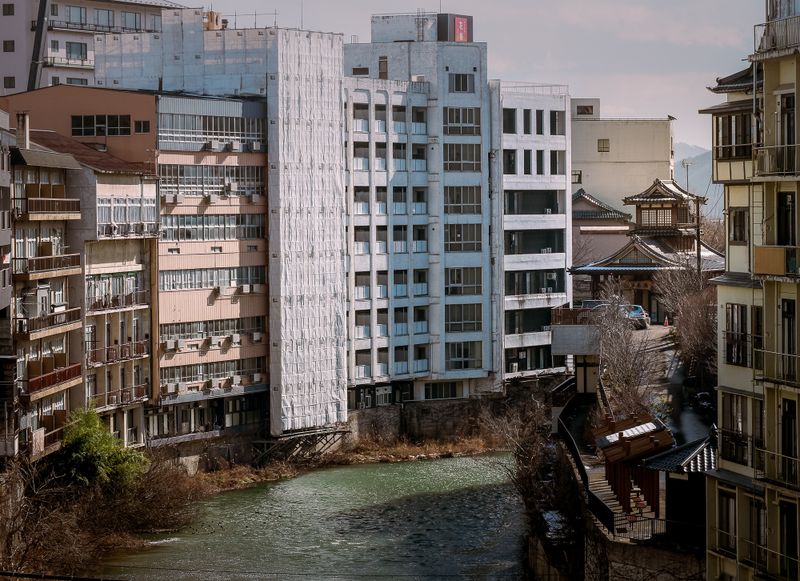
(Looking east over the Surikami River, Iizaka Onsen, Fukushima Prefecture.)
Looping back into town across the New Totsuna Bridge brings visitors to an area where the elements of retro, onsen origins, and manga marketing really come together.
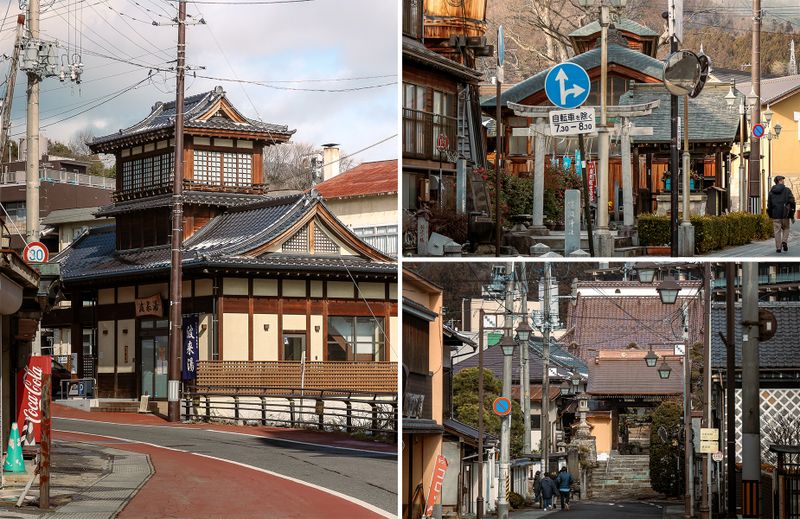
(Public baths and shrine in the center of hot spring town Iizaka Onsen, Fukushima Prefecture.)
The public bath Sabako-yu is at the center of the action. One of nine public baths in town, Sabako-yu is the oldest. And one of the hottest. “Warning: It’s really hot. Recommended for those with previous onsen experience,” says the Iizaka Onsen Tourist Association on its website.
Around Iizaka Onsen’s oldest public bath are some popular coffee shops and cafes - old in style, modern in service and menu. The area is also home to Kyu Horikiri-tei - the former house and grounds of a wealthy farming and merchant family. Admission to Kyu Horikiri-tei is free. There is a foot and hand bath on the grounds.
The topography of Iizaka Onsen is one of slopes, or “zaka.” Most are gentle, others are navigated by stairways. Looking back after cresting one of Iizaka Onsen’s zaka can provide the visitor with a classic retro onsen street view.
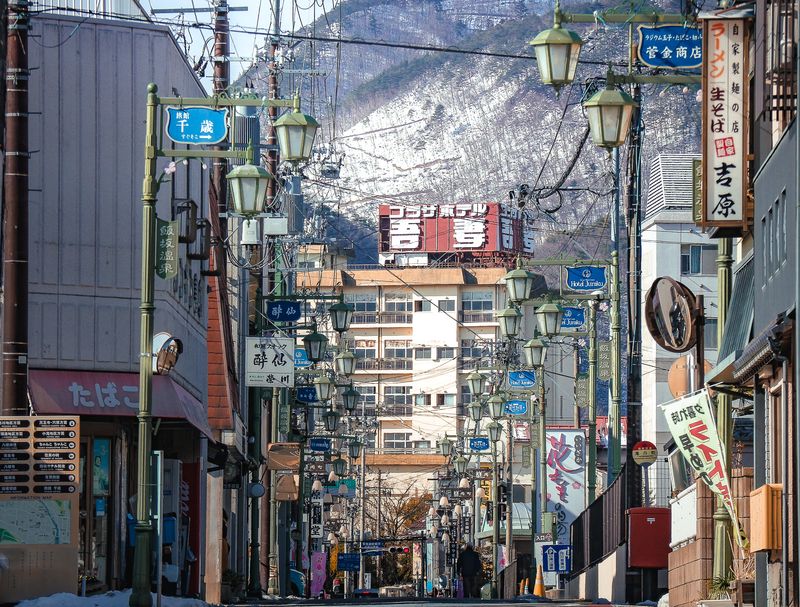
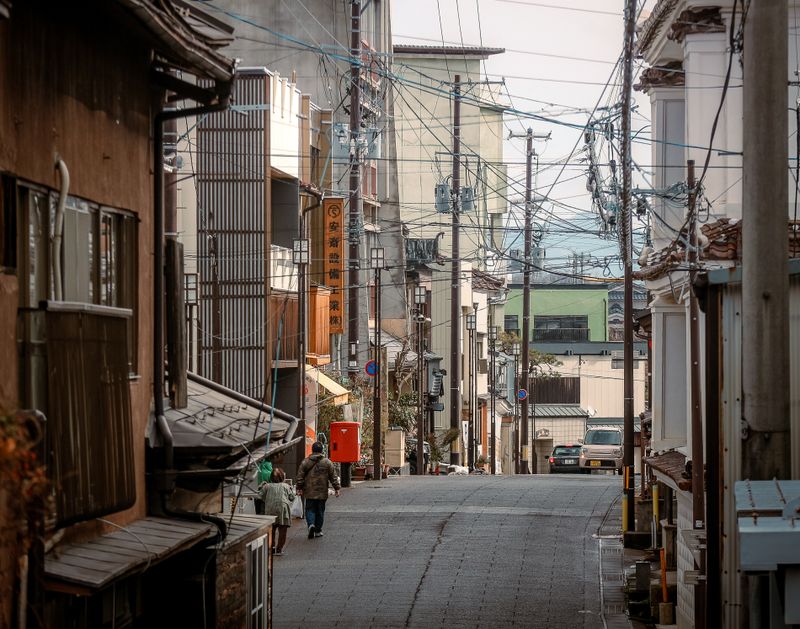
(The streets of hot spring town Iizaka Onsen, Fukushima Prefecture.)
We arrived at Iizaka Onsen around midday which gave us time to stroll around town, soak our trotters in the foot baths at Kyu Horikiri-tei and enjoy coffee and cake at oncafe, near Sabako-yu. By around 15:00 we were on a shuttle bus bound for our ryokan just out of town to the north - an area sometimes referred to as “Oku Iizaka.”
The next morning we spent another two hours exploring the town, including Hachiman Shrine and Hachiman-ji temple, before doing the obligatory souvenir shop. Just after midday we were on an Iizaka Line train bound for Fukushima Station.
With two or three hours to spare before catching a shinkansen back to Tokyo (in our case) the streets around Fukushima Station are easy to explore and delightfully retro.
Take the east exit out of Fukushima Station. Pause at the tributes to local composer Yuji Koseki tinkling the ivories, before heading in the direction of Fukushima Inari Shrine a few blocks further east.
Centering around Bunka-dori Street an area of nightlife entertainment establishments during the day appears as a fantastic example of Japanese retro.
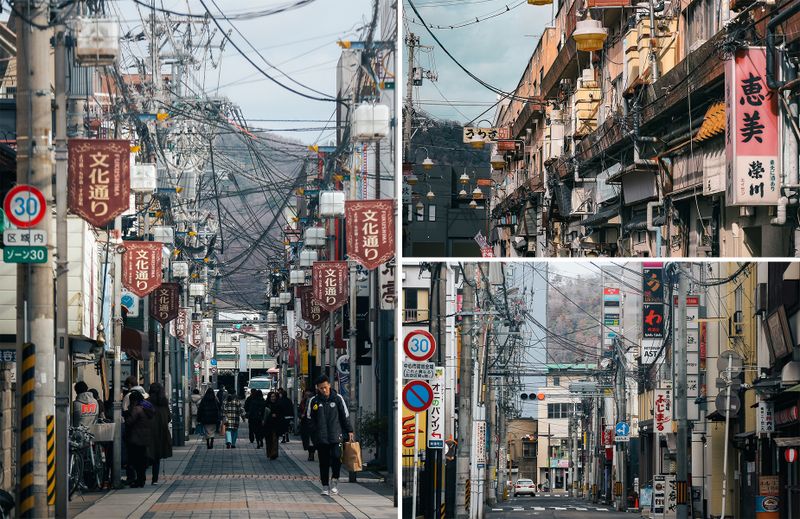
(Around Bunka-dori Street (left), downtown Fukushima.)
Here, the collection of “pubs,” karaoke joints and bars forms a peeling, faded, and rusty canvass for shop signage mixing 80s color schemes and graphics. The English-language copy is sometimes absurd, sometimes laden with innuendo, and often amusing for the native speaker.
During the day we found the streets here to be quiet and a lot of fun to photograph. At night they probably crackle into life with boozy office workers and young dudes sporting carefully manicured hair dos and Louis Vuitton pouches.
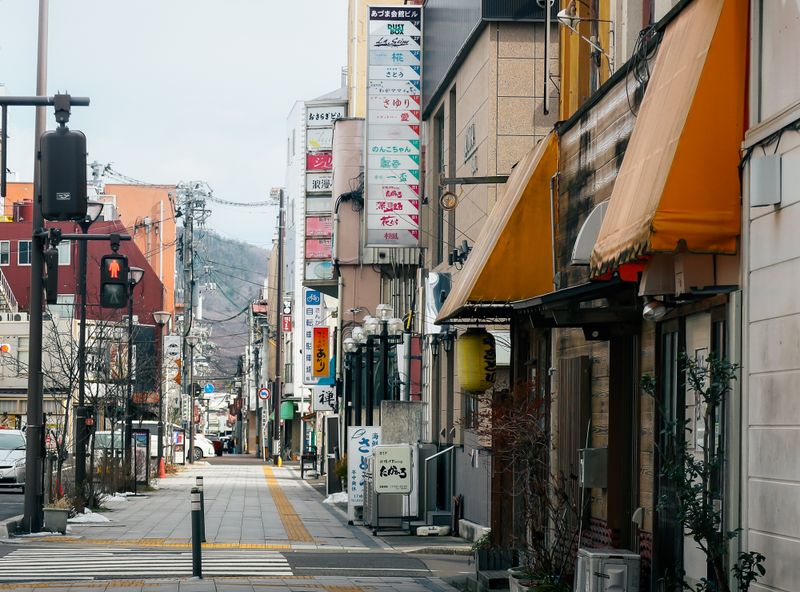
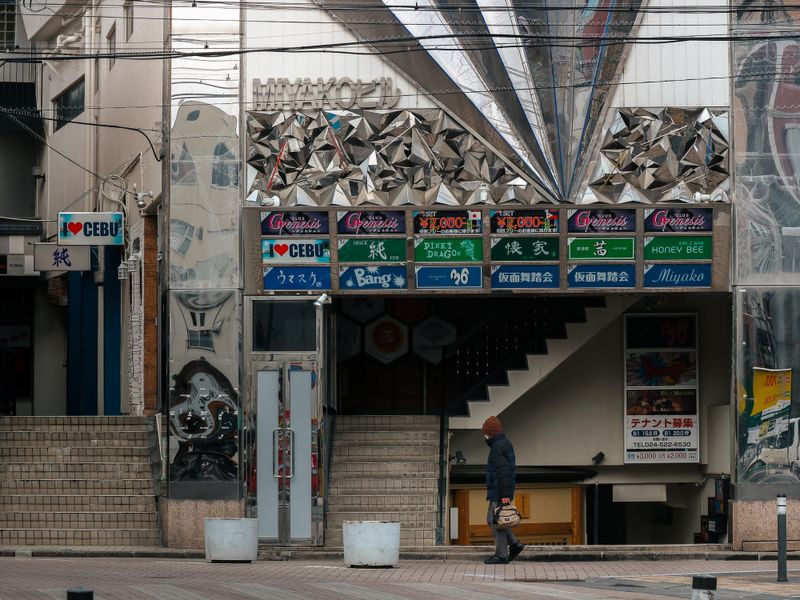
(The streets east of Fukushima Station.)
Holding its ground against the onslaught of nightlife excess is the small wooden structure of Fukushima St. Stephen’s Church, of all things.
Bunka-dori Street itself is more active during the day. Time could be spent here checking out the shops and businesses that line the street - craft beer bars, pancake cafes, and ethnic restaurants among them. Consider making this a spot to hunt for lunch.
At the eastern end of Bunka-dori, across the road from Fukushima Inari Shrine, a building that really looks like it might have been home to a pachinko parlor is now the Namie Dance Culture Park. We'd call that retro progression!
We concluded our trip by racing back to Fukushima Station for a look around Fukushima Product Promotion Center, in the Corasse building outside the west exit of the station.



0 Comments